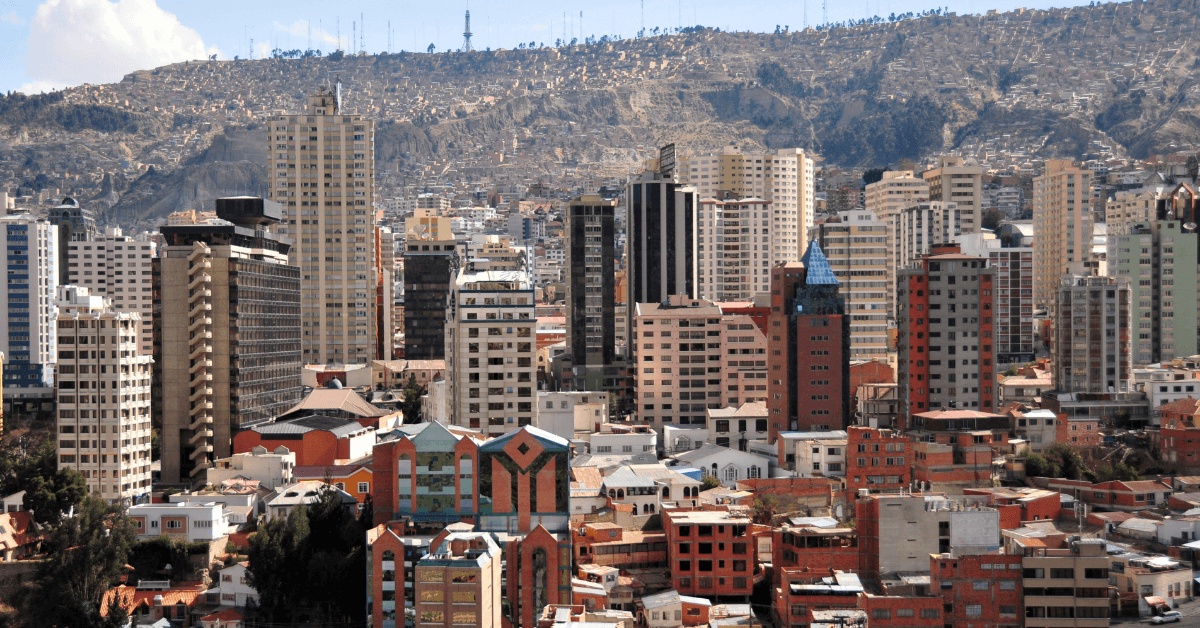Despite the mix of adverse external factors – such as low commodity prices and currency depreciation – that have hit Latin America over the past couple of years, Bolivia continues to be the investors’ oasis in the southern part of the region. In the past three years, the country has shown GDP growth rates well above its regional peers: 6.5% in 2013, 5.5% in 2014 and 4.8% in 2015. Most recently, in the first half of 2016, Bolivia grew by 4.3%, positioning itself comfortably as the fastest growing economy of South America. The economic activities boosting this growth were mainly banking services (12.8%), construction (7.2%), mining (7.1%), utilities (6.6%) and government spending (6.2%).
However, despite this apparent economic growth bonanza, the sustainability of such high rates could be in jeopardy. The main reasons behind a potentially significant slowdown in the Bolivian economy are strongly associated with two factors: the weaker gas price outlook and the government policies that are currently causing large twin deficits.
Strong dependence on falling gas exports
So far Bolivia’s success has relied fundamentally on its extractive industries. The gas industry in particular contributes to almost 10% of GDP and 50% of total exports, making Bolivia one of the most resource-dependent countries in Latin America. This dependence has left the economy fully exposed to the commodity price shocks experienced over the past two years. The price at which Bolivia is selling its gas has fallen in lockstep with collapsing oil prices, from US$6.11 in February 2014 to US$1.61 per MMBtu in 2016.
To make things worse, export prices of gas to Brazil and Argentina, the two main destinations of this export, are determined by a formula that takes into account the semi-annual average price of a basket of fuel oils. As a result of the application of the formula and current oil prices, the price of gas sold to Brazil, for example, has fallen from an average of US$10.1 in 2014 to almost US$4.1 per MMBtu in 2015, significantly depleting government revenues.
While the fall in gas prices is expected to continue decreasing the availability of public funds, it is unlikely that the government’s expansive public spending agenda will change in the short-term. Unlike Venezuela, Bolivia has managed to accumulate fiscal surpluses and foreign reserves during the so-called commodity super-cycle. These sound finances have provided a base for the government to adopt a countercyclical fiscal policy, increasing public spending by 30%.
Given the magnitude of the current external headwinds, such macro financial policies are timely, but are only a short-term solution to volatile commodity prices. Long-term mitigation of this risk is best addressed through diversification of the economy beyond the extractives sector. While the Bolivian government has achieved some success in terms of social metrics, it has so far failed to truly promote a more diversified and sustainable economy.
Decreasing public resources
While sizeable fiscal buffers have so far offered enough policy flexibility to remain resilient against external headwinds, government resources are declining at a rapid pace, as an ambitious public budget-led development plan focusing on sustaining growth augurs fiscal and external deficits rising much further.
The general government deficit rose to 4.5% of GDP in 2015, above the government’s previous estimates of 3.5%. As Bolivia’s capital spending on development projects ramps up and current spending pressures persist, FrontierView expects the general government deficit will rise further to an average of 7% of GDP in 2016-2018, significantly above LATAM’s expected median of 3.8%. Also, current account balance swung sharply negative in 2015 (-6.6% of GDP). FrontierView projects that the current account deficit will average 7.5% of GDP in 2016-2018, partly reflecting higher capital imports related to public development projects.
While consumer spending is expected to remain fairly stable at 3.9% in 2016, its positive effect on the economy will be partly offset by the lower expectations of investment at 3.5% in 2016 (down from 4.6% in 2015). To maintain consumption levels and attract investment to the country, the government and the central bank have remained committed to the fixed exchange rate regime (6.9 Bolivianos/US$) as an anchor for containing inflation and advancing de-dollarization. The boliviano is estimated to be stronger than its 10-year average in real effective terms, protecting consumption levels but posing a significant challenge to the competitiveness of the external sector and to the current reserve levels.
Reserve levels remain at 33% of GDP (US$11.6 billion) as of mid-2016, but are declining at a rapid pace as foreign exchange inflows decrease and expansive fiscal policy continues. Reserves fell by US$2 billion in 2015 and by nearly US$1.6 billion in the first half of 2016.
What to expect in the short-term?
In our view, the fall in the value of Bolivia’s decreasing gas reserves and exports is effectively translating into a significant drop in the country’s natural wealth, meaning there is now a lot less fuel to propel Bolivia’s economy forward. This means that Bolivia’s government will be now forced to strategically invest its decreasing fiscal buffers in order to industrialize beyond the commodity sectors.
Expansive fiscal and monetary policies, as well as an expansive central bank lending to State Owned Enterprises, coupled with the increasing resources needed to keep the fixed exchange-rate regime will become more difficult to sustain as President Morales is expected to continue with his expansionary agenda to regain his depleted popularity and find a way to be re-elected for the fourth time in 2020.

